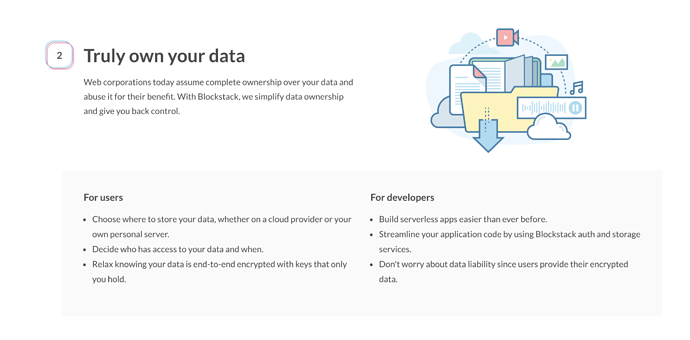I started this as a response to the meeting notes from this meeting a month ago, but decided this deserved its own post.
I’d really love to get a clear view on what works now as far as configuring your own gaia hub. What I mean by this is, what can a power user do now and will it actually work end-to-end? And what can a regular user do now?
I’m not sure where to track progress on user-selected storage as there are a variety of issues open tied to this:
https://github.com/blockstack/gaia/issues/94
https://github.com/blockstack/gaia/issues/121
https://github.com/blockstack/gaia/issues/89
https://github.com/blockstack/gaia/issues/86
https://github.com/blockstack/gaia/issues/80
https://github.com/blockstack/blockstack-browser/issues/953
https://github.com/blockstack/blockstack-browser/issues/1244
Let’s start with power users, going from easiest process to hardest:
One-Click Heroku Deploy
A power user can pretty easily configure a Heroku hosted hub with this method, but the documentation around next steps are sparse and based on multiple forum posts and Slack posts, it seems that even if you do get this up and running, it won’t matter because apps can’t access an updated gaia hub url. Someone please let me know if this is no longer the case.
Configuring a Different Hub (S3, Azure, Google Cloud)
The instructions for doing so are documented here: gaia/hub/README.md at master · stacks-archive/gaia · GitHub
However, it seems as mentioned above, that even successful configuration (which is no small task) results in apps still pointing to the default gaia hub: https://forum.blockstack.org/t/url-for-gaia-hub-connection-isnt-changed-after-save-api-settings/5512
Now, let’s move on to our non-power users. The ones that will actually be using the apps once devs get them out of alpha and beta. None of them will be doing the above, and presumably, all of them care about this promise:
In the meeting a month ago, it was agreed that users need to be able to select the storage provider of their choice:
These users are completely out of luck and do not own their data at all. This presents significant challenges for app adoption. For apps like Graphite and Misthos and Stealthy that have exited or are exiting the early stage of user traction and experimentation, the lack of user-controlled storage is a deal-breaker. I’ll give you an example.
Graphite is working on a significant enterprise deal with a big name journalism shop. However, the main selling point (user-owned, private data) is not available. Using just Blockstack, it is possible this deal cannot be made.
I know this has been brought up a lot (by me mostly) and I know there is work being done. But it’s not clear how well this work is being prioritized and where the best place to track status is. I’d love it if this forum post could be the place where high level updates end up, but if it needs to all be in github, just point us to the right issues to watch.
Ideally, I’d like to know the time period in which users (non-power users) can select their own storage providers. I need to determine whether or not I have to build my own solution outside of Blockstack for this.
